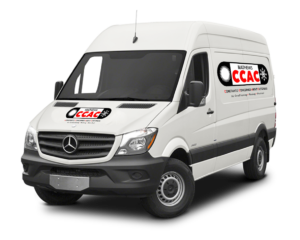You don’t usually think of your HVAC system as being the source of safety hazards. The fact is, it’s designed to be one of the safest appliances in your home in terms of both operation and maintenance. But there are a few things to look out for, particularly as your system gets older. They are not common occurrences, but it’s good to know about them.
1. Electric Shock
You can get an electric shock from loose or frayed wires in your thermostat or the HVAC system itself. Generally, homeowners will not be touching HVAC wires, but they do sometimes take on reconnecting or replacing thermostat wires. If you’re not sure of what you’re doing, schedule a service visit.
2. Refrigerant “Burns”
Refrigerant “burns” are actually injuries from frostbite. Wherever refrigerant touches the skin, it can freeze it, causing extreme pain. If you’re not licensed to handle refrigerant, don’t try to recharge your own HVAC system. Besides, if refrigerant is leaking (when it does, your AC won’t cool as well), you need to have the leak repaired or you could seriously damage the HVAC.
3. Fire
The most likely sources of fire from your HVAC system could be from the furnace (dirty burners, problems with the heat exchanger) or from a short in the wiring. Fires might also occur from leaking gases in the flue or the connections. Stacking boxes and flammable items near the HVAC could also result in fire if there is a spark.
4. Mold
Damp conditions inside your HVAC system can result in mold buildup, which is a problem for those with allergies. Failing to change the air filter when it’s dirty or dirty evaporator coils can impede proper removal of moisture, leading to wet conditions and mold.
5. Flooding
Flooding from your HVAC can occur when the condensate drain is plugged. Although not directly a hazard, a flooded HVAC cabinet could result in mold, if not addressed, or electric shock if someone needed to work with the wiring.
To learn more about HVAC safety hazards, contact CCAC. We serve the Coastal Bend area of Texas.












